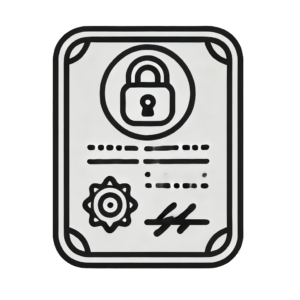Introduction to Pentest SOC 2 and its Importance
Understanding SOC 2

When it comes to ensuring SOC2 compliance, understanding the intricacies of this framework is crucial. SOC 2, which stands for Service Organization Control 2, is a set of compliance standards designed to assess the security, availability, processing integrity, confidentiality, and privacy of data in third-party service providers.
These providers are essential for businesses that rely on external services to manage their sensitive data. By comprehensively understanding SOC2 requirements, organizations can effectively safeguard their data and ensure their compliance with industry regulations.
One of the key strategies in ensuring SOC2 compliance is conducting regular penetration testing. Pentesting involves simulating cyberattacks to identify and address vulnerabilities in an organization’s systems and infrastructure. By employing effective pentest strategies, businesses can proactively identify and mitigate security risks, thereby enhancing their overall security posture and meeting SOC2 requirements. Pentesting not only helps in identifying weaknesses but also provides insights into potential threats and compliance gaps, allowing organizations to implement targeted security measures to fortify their defenses.
In summary, it is important to understand SOC2 and use strong pentest strategies to follow rules and keep up strong cybersecurity. By being prepared for cyber threats and always working to make security better, businesses can keep sensitive information safe and earn the trust of their customers and partners.
The Importance of SOC2 Compliance
Making sure your organization meets SOC2 compliance is very important if you deal with sensitive information. SOC2 compliance shows your customers and partners that their data is being kept safe and following rules. By using good pentesting strategies, you can find and fix any weak spots in your systems and procedures that might put data security at risk.
Regularly conducting penetration tests is important for maintaining SOC2 compliance. These tests mimic real cyber attacks to find any weaknesses that could be taken advantage of by hackers. By finding and fixing these vulnerabilities before they are exploited, companies can keep their clients’ data secure and maintain their trust.
In addition, being SOC2 compliant shows that a company prioritizes keeping your information safe and secure. It lets customers and partners know that the organization takes data security seriously and works hard to protect sensitive information. Meeting SOC2 standards can also make a business stand out in the competitive market by proving they are a trustworthy and dependable choice.
Key Components of SOC2 Compliance
SOC2 Trust Service Criteria
When it comes to ensuring SOC2 compliance, understanding the Trust Service Criteria is crucial for organizations. The Trust Service Criteria includes security, availability, processing integrity, confidentiality, and privacy – all of which are essential components of a strong cybersecurity posture. Effective SOC 2 security testing strategies play a significant role in meeting these criteria and maintaining SOC2 compliance.
Penetration testing, also known as ethical hacking, is when experts pretend to be cyber attackers to see where a company’s computers, networks, and software are vulnerable to real attacks. By conducting these tests regularly, organizations can identify and fix security issues to safeguard their customers’ and company’s information. This demonstrates a commitment to safety and trust for everyone involved, and ensures that security standards like SOC2 are met.
In conclusion, incorporating effective penetration testing strategies is a key element in ensuring SOC2 compliance and meeting the rigorous Trust Service Criteria. By staying proactive and vigilant against cyber threats, organizations can mitigate risks, safeguard data, and uphold the highest standards of security to build trust in their operations.
Security Measures in SOC2
When it comes to meeting SOC2 compliance standards, having strong security measures in place is very important. A Security Operations Center (SOC) plays a key role in keeping an organization’s information safe. To be SOC2 compliant, organizations must follow certain security rules and practices to safeguard important data and keep their clients and stakeholders happy.
Effective security testing strategies are important for meeting SOC2 compliance standards. Security testing helps find weaknesses in a company’s defenses, so they can be fixed early on. By regularly testing their security systems, companies can make sure they are working well and make any needed improvements to stay safe from cyber threats.
Following security steps like limiting access, using encryption, verifying identity with multiple steps, and keeping a close eye on things are important for meeting SOC2 standards. These steps help companies lower risks and improve their ability to protect against possible security issues.
In conclusion, maintaining strict security measures in SOC2 compliance is imperative for organizations to protect sensitive data and uphold the trust of their clients. By incorporating effective penetration testing strategies, organizations can identify and address security vulnerabilities, ultimately enhancing their overall security posture.
Significance of Penetration Testing in SOC2 Compliance
Penetration testing is an important process for companies to make sure they are meeting SOC2 compliance requirements when they work with sensitive information. By doing thorough tests, companies can find any weaknesses in their systems that hackers might try to take advantage of. These tests mimic actual cyber attacks to show where a company needs to improve their security.
A good penetration testing plan includes careful preparation, testing, and looking at the results. It’s important to hire experts who are certified to do these tests so that all possible ways attackers could get in are checked. Also, it’s a good idea to do these tests often to keep up with new cyber threats and rules.
Organizations must understand the importance of penetration testing not only for compliance but also for enhancing their overall cybersecurity resilience. By proactively identifying and addressing security gaps, companies can mitigate the risk of data breaches and safeguard their reputation among customers and stakeholders.
Role of Penetration Testing in Achieving SOC2 Compliance
Penetration testing is very important for organizations to meet SOC2 compliance standards. SOC2 compliance is necessary for companies that deal with sensitive customer information to show that their security measures are working well. By doing regular penetration tests, organizations can find any weaknesses in their systems and networks that might put them at risk of data breaches or leaks. Penetration testing helps to simulate cyber attacks, so organizations can fix any security problems before they become a real threat.
Having a strong plan for conducting security tests is crucial for meeting and keeping up with SOC2 compliance standards. Through thorough and detailed security tests, companies can evaluate how well their security systems are working and find ways to make them even stronger. These tests also help to see how well security measures like passwords, encryption, and surveillance systems are doing their job. By fixing any problems found during these tests, companies can make sure their data is safer and less likely to be hacked.
In summary, conducting penetration tests is a key factor in meeting SOC2 compliance. Regularly testing the security of your systems and networks helps show that your organization is dedicated to keeping customer data safe and creating a secure setting. It’s important to have strong penetration testing techniques in place to ensure SOC2 compliance and protect vital information from potential cyber attacks.
Effective Penetration Testing Strategies for SOC2 Compliance
When it comes to ensuring SOC2 compliance with effective pentest strategies, adopting a risk-based approach is paramount. A risk-based strategy involves identifying and prioritizing the most critical assets and vulnerabilities within an organization’s infrastructure. By focusing on the areas with the highest risk exposure, companies can allocate their resources effectively to mitigate potential threats and vulnerabilities.
Penetration testing is an important part of a security strategy. It involves mimicking real cyber attacks to find weaknesses in security defenses. By doing regular tests, organizations can find and fix vulnerabilities before bad actors can take advantage of them. This helps improve overall security and follow SOC2 rules.
Ultimately, a risk-based strategy not only helps organizations meet SOC2 compliance standards but also strengthens their overall cybersecurity posture, ensuring resilience against evolving cyber threats in today’s digital landscape.
Comprehensive Security Assessment and Continuous Monitoring
Keeping your data safe and secure involves following strict cybersecurity practices, like conducting penetration tests to find weak spots in your system. It’s not just about scanning the surface – a thorough security assessment involves digging deep into every part of your technology to prevent cyber attacks. It’s important to constantly monitor your systems for any new threats and vulnerabilities, so you can stay one step ahead of hackers and comply with SOC2 regulations.
Regularly conducting penetration testing is an important step in protecting your business from cyber attacks. This type of testing simulates real-life attack scenarios to find any vulnerabilities in your system. By doing this regularly and creating plans to fix any issues found, businesses can improve their security and show they value protecting sensitive information. By performing thorough security assessments and keeping an eye on potential threats, organizations can stay ahead of cyber threats and meet compliance standards like SOC2.
Conclusion and Best Practices
When it comes to making sure your company is following SOC2 compliance rules and keeping data safe, it’s important to regularly check for vulnerabilities and test security measures. By doing thorough tests, organizations can find and fix any weak spots in their security before hackers can take advantage of them. Keeping detailed records of these tests and what fixes were made is also important for showing that the company is following the rules during inspections. Working with experts in cybersecurity and using tools to automate security testing can make the process smoother and make sure the company is as safe as possible. In the end, being proactive and thorough in testing security measures is not only necessary for following SOC2 rules, but also for keeping sensitive data safe and keeping customers’ trust.
Best Practices for Maintaining SOC2 Compliance
Ensuring SOC2 compliance is very important for organizations to show they take data security and privacy seriously. One way to stay compliant is by doing regular penetration tests. These tests help organizations spot any weaknesses in their systems and fix them before they become a problem. It’s also important to have strict rules about who can access sensitive information, train employees on security regularly, and keep an eye on systems all the time. Documenting security measures and updating policies regularly is key to meeting SOC2 requirements. By following these steps, organizations can improve their security and stay SOC2 compliant.
